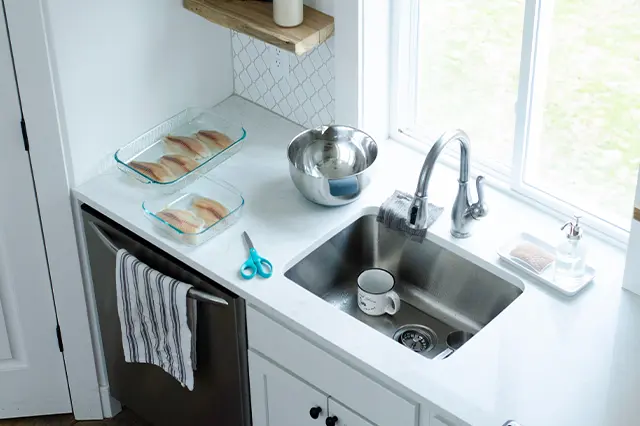
DIY Guide To Unclogging Your Kitchen Sink Drain In 5 Easy Steps
Clogged sink drains can be a real headache. Not only do they make it difficult to use your sink, but they can also create an unpleasant smell in your kitchen. Plus, the longer you wait to fix the clog, the more damage it could create in your pipes. That’s why we’ve put together this DIY guide on how to unclog your kitchen sink drain in 5 easy steps. We’ll walk you through everything from what tools you need and how to remove the clog, all the way to preventative measures you can take to avoid future clogs. So let’s get started!
Step One: Boil a kettle of hot water
If your kitchen sink is clogged, don’t panic! You can unclog it yourself using this easy, DIY guide. All you need is a kettle of hot water and a plunger.
First, boil a kettle of hot water. Then, remove the plug from the drain and place the plunger over the hole. Push and pull the plunger up and down until the clog is gone. Finally, flush the drain with cold water to remove any residual dirt or debris.
Step Two: Remove the stopper from the drain and pour the hot water down
If your sink is still clogged after following Step One, it’s time to move on to Step Two. For this, you’ll need a pot of hot water. Boil the water and then carefully pour it down the drain, being careful not to splash yourself. The hot water will help to break up any remaining grease or food particles that are causing the clog.
Step Three: Use a plunger to unclog the drain
If your kitchen sink is backed up and the plunger isn’t doing the trick, you may need to remove the P-trap under the sink to clear the blockage. First, make sure there is no water in the sink so you can work on it comfortably. Then, locate the P-trap—it’s the U-shaped pipe under the sink that connects the drain to the sewer line. Loosen the nut that secures it with a wrench, and then unscrew it by hand. Once you’ve removed the P-trap, look inside of it to see if there is any debris that could be causing the clog. If you don’t see anything, place the P-trap back on and tighten the nut. If there is debris in the P-trap, flush it out with water and reattach it.
Step Four: Pour a mixture of baking soda and vinegar down the drain
If your kitchen sink is still clogged after following the first three steps in this guide, it’s time to try pouring a mixture of baking soda and vinegar down the drain. The chemical reaction between these two household ingredients can help to break up any remaining clog in your drain.
1. Start by mixing together equal parts baking soda and vinegar in a bowl.
2. Carefully pour the mixture down your kitchen sink drain.
3. Leave the mixture to work for a few minutes, then flush the drain with hot water.
Step Five: Flush the drain with hot water from the kettle
If your drain is still clogged after following the previous four steps, you can try flushing it with hot water from the kettle. Boil a kettle of water and pour it slowly down the drain. Be careful not to splash yourself with the hot water. If the hot water doesn’t unclog the drain, you may need to call a professional plumber.
When to Call a Professional Plumber
When it comes to plumbing, there are some things that you can try to fix on your own. However, there are also times when it is best to call in a professional plumber. Here are some examples of when you should contact a professional plumber:
-If the problem is with the main water line
-If sewage is backing up into your home
-If you have a gas leak
-If your toilet won’t flush
-If water is coming out from under your sink
-If your bathtub or shower won’t drain properly
In most cases, a plunger will be able to take care of a clogged kitchen sink drain. However, if the clog is further down the drainpipe, you may need to use a snake or other type of tool to reach it. If you cannot clear the clog on your own, it is best to call in a professional plumber who can safely and effectively remove the blockage.
